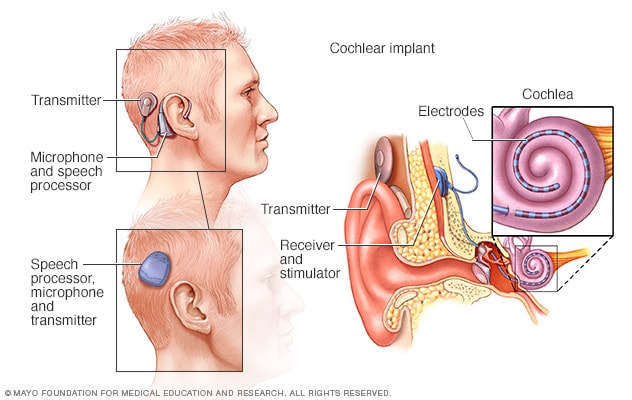Hi, I’m not really sure what you’re asking, so I’m going to try to explore some of the ideas adjacent to your post. I think there might be a misunderstanding somewhere in here, but I’m not sure, so pardon me if I get something wrong, or go over something that you already know.
Let’s look at what components are in a cochlear implant:

Like the name suggests, there’s a portion of the device that is implanted on the inside of the skull, with a wire that threads through the cochlea. This is the cochlear implant.
For many reasons, the Tympan should not be installed inside of someone’s skull. It is really big, it is not sealed or enclosed, it heats up, and it has physical switches on it that would be made inaccessible, to name a few. Plus, you wouldn’t be able to access the 3.5 mm jacks. To be very clear-- cochlear implants are INSIDE the head. INSIDE! You would be a madman to even dream of installing your own cochlear implant!
Perhaps you were not thinking ‘cochlear implant’, perhaps you were thinking ‘signal trasmitter’?
So, the Tympan is a board for audio processing. If you look at top left portion of the image, the Tympan could replace the portion near the patient’s ear-- the part that says ‘microphone and speech processor’. It sounds like the Cthulhu IO projects are closer in knowledge area to the ‘transmitter’ portion of the image, and to the ‘receiver and stimulator’ areas in the inner image. Rather than the Tympan being an audio analog to the Cthulhu IO project, it looks to me like the Cthulhu IO project’s tongue nerve stimulator is something that could possibly take input from the audio processing of the Tympan and send it along elsewhere.
Does that help clear things up? I suspect the communication method between the transmitter and the internal cochlear implant is obfuscated, but perhaps you could find more information on it by looking up the FDA approval documents for the implant’s receiver portion.
Cheers!

